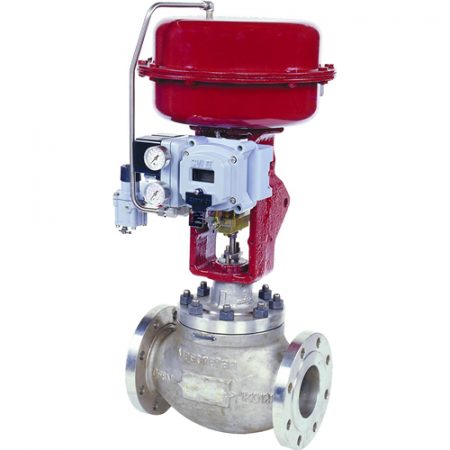Enhancing Functional Performance with Advanced Control Valves
Wiki Article

Maximize Energy Financial Savings and Comfort With Advanced Structure Automation Controls
In the realm of contemporary architecture and facility management, the combination of advanced structure automation regulates stands as a pivotal innovation. By using the power of automation, buildings can adjust, react, and develop in ways that were when unthinkable.Energy Efficiency Conveniences
Power effectiveness advantages can significantly minimize power consumption and functional prices in buildings. Energy-efficient systems, such as sophisticated structure automation controls, can maximize the use of resources like lighting, home heating, and air conditioning, leading to reduced energy expenses over time.Moreover, enhanced energy efficiency can extend the life expectancy of structure tools and systems. By operating a lot more effectively, HVAC systems, light, and other structure components experience less wear and tear, resulting in reduced upkeep and replacement prices. Furthermore, energy-efficient buildings frequently command greater property worths and rental rates, giving long-lasting economic benefits to proprietors.
Additionally, power efficiency can improve resident comfort and efficiency. Appropriately controlled interior environments with ideal lights and thermal problems create a more helpful and pleasurable work space, causing boosted staff member fulfillment and efficiency. On the whole, the power effectiveness advantages associated with sophisticated structure automation controls are complex, including price financial savings, ecological stewardship, and occupant wellness.
Boosted Convenience Control
Enhancing comfort control in structure settings needs an innovative integration of sophisticated automation systems for optimum resident wellness. By using sophisticated building automation controls, centers can tailor the indoor environment to meet the particular requirements and preferences of residents. These systems allow precise policy of temperature, lighting, and ventilation, developing a comfy and productive ambience. Passenger satisfaction and efficiency are carefully connected to thermal convenience, making it crucial to have systems in place that can adjust to altering conditions in real-time.Improved comfort control exceeds fundamental temperature adjustments. It consists of features such as personalized setups, occupancy sensors, and natural light application to create a vibrant and receptive environment. By integrating these innovative controls, buildings can not just improve convenience but likewise improve energy performance by enhancing system procedures based upon real occupancy and usage patterns. Eventually, focusing on resident convenience through sophisticated automation systems brings about a more pleasurable and much healthier interior environment.
Operational Efficiency Improvements

In addition, the application of real-time monitoring and analytics devices enables structure drivers to identify power ineffectiveness and functional abnormalities without delay. By constantly keeping an eye on energy use patterns and system efficiency metrics, view it now modifications can be made in real-time to optimize energy intake and guarantee peak operational performance. control valves. Additionally, integrating need response methods right into structure automation controls can even more improve functional efficiency by dynamically changing power use based on grid problems and pricing signals
Indoor Climate Optimization
Reliable interior climate optimization is a basic aspect of building automation controls, making certain residents' comfort and health while taking full advantage of power financial savings. By using sophisticated sensors and controls, developing automation systems can constantly monitor and adjust temperature, humidity levels, air high quality, and air flow to develop an optimal indoor environment. Maintaining comfy and regular problems not just improves resident fulfillment yet additionally increases performance and total health.Interior climate optimization likewise plays an important function in energy efficiency. By fine-tuning home heating, air flow, and air conditioning systems based on real-time data and tenancy patterns, building automation controls can dramatically minimize power intake - control valves. For example, applying strategies such as demand-controlled air flow and thermal zoning can assist lessen power waste while making sure that each area of the structure receives the essential conditioning.

Sustainable Environment Production
Building automation manages not only enhance interior climate conditions for energy effectiveness and occupant comfort however additionally lay the structure for creating a lasting environment with calculated management of sources and systems. By incorporating sophisticated building automation innovations, such as sensors, actuators, and intelligent software program, facilities can adjust and keep track of power usage in real-time to minimize waste and reduce their carbon footprint. These systems make it possible for predictive maintenance, recognizing potential problems before they intensify and maximizing equipment performance to boost longevity and efficiency.Furthermore, lasting environment production extends past power administration to encompass water preservation, waste decrease, and indoor air top quality enhancement. Structure automation controls can control water usage, find leaks, and make certain proper garbage disposal practices, contributing to general sustainability initiatives. Furthermore, by regulating and keeping track of air flow and filtering systems, these modern technologies boost owner health and efficiency while reducing energy intake associated with HVAC operations.
Final Thought
Finally, advanced building automation manages offer significant benefits in regards to power financial savings, convenience control, operational effectiveness, indoor environment optimization, and creating a lasting setting. By implementing these controls, structures can attain optimum efficiency while minimizing energy see post intake and boosting passenger comfort. It is apparent that using innovative automation modern technology is critical in improving structure performance and developing an extra sustainable future.Energy efficiency advantages can significantly lower power consumption and functional expenses in structures. Generally, the energy efficiency benefits connected with sophisticated structure automation controls are diverse, encompassing price financial savings, ecological stewardship, and owner well-being.
Additionally, including need action methods right into structure automation controls can further enhance operational efficiency by dynamically changing energy usage based on grid conditions and pricing signals.
Building automation regulates not just maximize interior environment conditions for power performance and owner convenience however likewise lay the foundation for creating a sustainable environment through tactical management of systems and sources.In final thought, advanced building automation controls deal significant benefits in terms of power financial savings, convenience control, operational efficiency, indoor climate optimization, and creating a lasting setting.
Report this wiki page